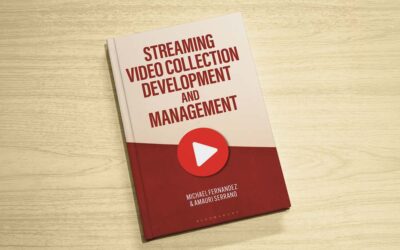Active Reading is a Key Skill for Information Professionals
Miriam Kahn, MLS, PhD
Active reading enhances retention of information and concepts. It’s a key skill for special librarians because it increases our comprehension and retention of information. By focusing on the key facts, theories, and issues in an article, report, or monograph, active reading focuses our attention on the most salient aspects of any written piece.
Active reading, like active listening, is a learned skill. It is essential for all information professionals.
Defining active reading
Active reading is the opposite of passive reading, the type of reading we engage in when enjoying a novel or piece of popular non-fiction. Passive reading takes time, often hearing each word in your head and “disappearing” into a story. Active reading takes concentration and attention to theories, facts, and conclusions with supporting data and background taking second place.
Active reading is designed to increase comprehension and retention of the main thrust of the report. Successful practitioners use paper for note taking, make connections within the text, and draw parallels with other, similar studies.
Engaging in active reading
Active reading requires focus and concentration. The object of active reading is to glean the meaning of a piece of writing, identify the thesis or purpose of the study or report, and identify the key elements of a survey, project, or analysis. At the same time, active readers identify the types of data used to arrive at thesis or hypothesis and conclusion.
When approaching a text, you actively read through the text three times. First skim the work, looking for the thesis or purpose of the study or report. Pay particular attention to the topic sentences and conclusions in the introduction, conclusion, and any abstract or executive summary. On this initial reading, briefly look at the footnotes / endnotes, the bibliography, and even the index.
For the second reading, pay careful attention to the abstract, introduction, first and last chapters. Confirm that the thesis or purpose of the study is reiterated and supported by the concluding chapter. Determine that the internal chapters or sections contain descriptions of the study or supporting evidence and all relevant data. Re-examine the bibliography, notes, and appendices for additional studies, referenced authorities on the subject or theory, and documentation for data and sources.
For a third time, reread the abstract, introduction and conclusions to solidify in your comprehension of the concepts and theories proposed by the author(s). During this final read through, craft any reviews, memos, and recommendations for follow-through and any information to share with clients, fellow librarians and archivists.
Active Reading Dos and Don’ts
Take notes on paper or 5×7 cards. If the notes take up more space, you are focusing on too many pieces of information. Cull anything extraneous.
- Don’t highlight on the text. Take notes in the margins instead. Better yet, take notes on cards.
- Note the main concepts and connections to established studies and existing theories.
- Note innovative and new ideas.
- Identify key terms and authoritative experts.
- Raise questions of the text to follow up or perform additional research upon.
Taking notes by hand enhances retention of information. Studies show the kinesthetics of writing and jotting notes solidifies data, concepts, and information in memory. Another advantage of note-taking is that it activates learning. In many instances, editing notes leads to connecting data across disciplines and academic fields.
Some behaviors that do not encourage active reading:
- Highlighting paragraphs – jot down key concepts instead.
- Reading and rereading – focus on topic sentences and conclusions.
- Reading every word. – skim the text, identify key ideas and elements.
Active reading requires focus. Eliminate distractions.
Write down unknown terminology and look it up later. Be certain to write down definitions for future use and to explain to researchers and colleagues.
Aiding Active Reading
Writing for active readers is a crucial skill for special librarians. When structuring your own written reports and documents, facilitate comprehension and aid active readers and retention of information by laying out information in enhance retention and assimilation of new ideas.
These are some of the elements to include which will assist in structuring your writing for learning.
- Include an abstract and executive summary for reports.
- Identify purpose and thesis in the initial paragraphs.
- Reiteration of purpose and conclusion in the final paragraph.
- Subtopics that break the study into subsections with succinct, readily identifiable concepts.
- Define new terminology and jargon in the text or appended glossary.
- Remove extraneous information.
- Write in declarative sentences in the active voice.
- Control the number of examples, visual images.
Summing it up
Active reading enhances our ability to digest and process ideas in texts, and to correlate similar studies and theories to support your researcher’s needs. Active reading incorporates new data into your own understanding of the field and specialty. Note taking saves time, eliminating the need to reread and reprocess the concepts and supporting data of reports and studies.
My next post will focus on writing as a tool for learning.
Miriam Kahn, MLS, PhD
Miriam B. Kahn, MLS, PhD provides education and consulting for libraries, archives, corporations, and individuals. See Miriam’s pieces for Lucidea covering library technology and skills for special librarians.
Similar Posts
Growing Your Leadership Skills: 7 Tips for Special Librarians
Great library leaders aren’t born—they’re made through learning self-reflection and practice. Here are seven strategies to help you grow and lead with impact.
Keeping Up with Copyright and Generative AI: What Special Librarians Need to Know
As generative AI becomes more prevalent copyright law is evolving to address its impact. A new report from the U.S. Copyright Office provides guidance on what is (and isn’t) copyrightable.
Understanding Shadow AI: Risks Costs and Governance
AI can enhance search discovery and efficiency but unsanctioned adoption—known as “shadow AI”—can lead to budget overruns and compliance risks. Here’s how to evaluate AI pricing models and build a governance strategy that balances innovation with cost control.
Interview with an Author: Fernandez on Streaming Video Collection Development
As demand for streaming video in libraries grows so do the challenges of managing access budgets and licensing. Co-author Michael Fernandez shares key insights from his book “Streaming Video Collection Development and Management”.






Leave a Comment
Comments are reviewed and must adhere to our comments policy.
0 Comments